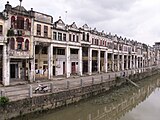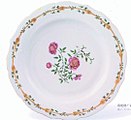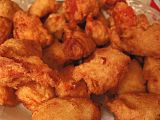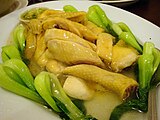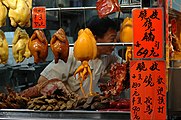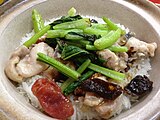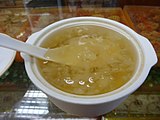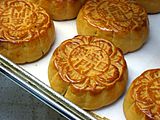Cantonese culture
This articleneeds additional citations forverification.(November 2020) |
| Cantonese culture | |||||||||||||
|---|---|---|---|---|---|---|---|---|---|---|---|---|---|
| Traditional Chinese | Việt văn hóa | ||||||||||||
| Simplified Chinese | Việt văn hóa | ||||||||||||
| |||||||||||||
| Lingnan culture | |||||||||||||
| Traditional Chinese | Lĩnh nam văn hóa | ||||||||||||
| Simplified Chinese | Lĩnh nam văn hóa | ||||||||||||
| |||||||||||||
| Gwongfu culture | |||||||||||||
| Traditional Chinese | Quảng phủ văn hóa | ||||||||||||
| Simplified Chinese | Quảng phủ văn hóa | ||||||||||||
| |||||||||||||
| This article is part ofthe serieson |
| Cantonese culture |
|---|
Cantonese culture,orLingnan culture,refers to the regionalChinese cultureof the region ofLingnan:twin provinces ofGuangdongandGuangxi,the names of which mean "eastern expanse" and "western expanse", respectively.
With the migration of theCantonese peopleto nearbyHong KongandMacau,as well as in manyoverseas communities,Lingnan/Cantonese culture has become an influential cultural force in the international community, and forms the basis of the cultures ofHong KongandMacau.English words of Chineseborrowed many terms from Cantonese.
Terminology
[edit]Strictly speaking, the term "Lingnan culture" has two definitions:
- In a purely geographical sense, the term includes not only Cantonese culture but also the cultures of theHakkas,Teochews,Taishanese,Hainanese,and non-Han groups such as theZhuangs,Tanka,orShewithin the Lingnan region.
- More typically, is only used in referring to Cantonese culture, the historically dominant culturo-linguistic force in Guangdong and Guangxi.
This article uses the second definition of "Lingnan culture" – as the synonym of "Cantonese culture".
Brief history and overview
[edit]
From Nanyue to Sinicization
[edit]In 200 BCE, Guangdong and Guangxi, alongside the land now known as Northern Vietnam, was controlled by the kingdom ofNanyue(Nam việt quốc;Naam4jyut6gwok3), inhabited primarily by the non-ChineseYue people.The kingdom was later conquered by theHan Empireand came under Han Chinese control at around year 100 BCE. However, large-scalesinicizationdidn't occur until the 6th to 7th century CE, at which point the region was held by theTang Empire.Later, between the 10th and 13th century, there was a large influx of Han Chinese migrants from the north, which was at that time invaded by theMongolsand a few other non-Han ethnic groups. This resulted in large-scale intermixing of the Han Chinese and Nanyue people during that period[1]– reflected in the fact that modern Cantonese people are, genetically, hybrid descendants of the ancient Han Chinese and Nanyue cultures.[2]Modern Lingnan (descendents of Northern Nanyue) contains both Nanyue and Han Chinese elements: modern Cantonese has kept some features of Middle Chinese pronunciation (the prestige language of the Tang Empire), but has also retained a substantial amount of features from the long-extinctNanyue language.[3]
Sinicization was still ongoing during theTangandNorthern Songdynasties, evidenced by many famous Northern Chinese poets and writers describing the region as "barbaric" and the language spoken in the region as unintelligible with the prestige language commonly spoken in the North. Famous Chinese writerHan Yudescribed the local population as "Tiểu lại thập dư gia, giai điểu ngôn di diện", which literally means "[speaking] a bird language and [having] barbarian faces". Another writer,Liu Zong Yuan,described the local language as "Sở việt gian thanh âm đặc dị, quyết thiệt 啅 táo", which literally means that the language sounds strange and is unintelligible with the common language from the North. This shows that sinicization was still ongoing andBai Yuelocal tribes were still prevalent in the region. The large scale of sinicization of the Lingnan region was largely complete by the lateSouthern Song dynasty(12th to 13th centuries). From the 15th to 18th century, Lingnan (especially the area around Guangzhou) served as one of the main ports for theMing Empire.Cantonese people were exposed toWestern Europeancultures and incorporated European elements into their own cultural artifacts. It was by that time that the Lingnan culture largely attained its current form.
From 19th century onward
[edit]With Guangzhou being a major port for both theQing dynastyand thePeople's Republic of China,Cantonese people have often dominated Han Chinese immigration to the Western world, resulting in Cantonese historically being thelingua francain most WesternChinatowns.They also helped establish the Chinese term for Chinatown:Đường nhân nhai;Tong4jan4gaai1.This term literally means "Street of the Tang people". This is said to reflect the fact that the sinicization of Lingnan was most prominent during the Tang dynasty, which resulted in the Cantonese people having an especially strong affinity to that dynasty.[4]
On the other hand, since the early 20th century, Hong Kong, then underBritish colonial control,developed quickly in every aspect. The city's high level of development drew the envy of many people in the Lingnan region. Many of them have been watching theTV dramasandmoviesproduced by Hong Kong, resulting in the city having significant cultural influence in the region. For instance, many Cantonese frommainland Chinawrite using Traditional Chinese characters, like theHong Kongersdo.[citation needed]Hong Kong, for its part, has experienced many cultural and economic exchanges with other East Asian nations. This, in turn, made Hong Kong absorb the cultures ofJapan,Korea,and to some extent,Taiwan.For instance,Hong Kong Cantonesehas many usages and vocabularies borrowed fromJapanese.
Overall characteristics
[edit]Lingnan culture is considered to be a commercial, oceanic culture that embodies the history of the region:[5]Its foundation consists of a mix of Han Chinese and Nanyue (especially the Tang dynasty's and Song dynasty's) influences, having preserved a considerable amount of Tang-Song cultural heritages not preserved in other branches of modern Han Chinese cultures. Lingnan later became the Ming Empire's main contact point with Western Europeans via commerce, and thus came to include European ideas in its arts and philosophy.
Traditional language
[edit]Traditionally, the Lingnan region's sole dominant language is Cantonese, thestandard formandprestige dialectof theYue Chinese.The vast majority of Lingnan's traditional operas, folk songs, and poetry are all expressed in Cantonese. It can trace its roots all the way back to the ancient Nanyue people. Their language did not belong to the Chinese language family, though. However, with the large influx of Han Chinese migrants throughout history, especially during theTang–Songera between the 10th to 13th centuries, the language slowly sinicized and evolved into modern standard Cantonese.[6][7][8]
Cantonese has retained certain features of theNanyue language.[9]For instance, unlike most other Chinese languages, Cantonese often put an adjective behind the noun it is describing. In Cantonese, the word for "hen" (Kê nả;Gai1naa2) is made up of two words: "Kê",meaning" chicken ", and"Nả",meaning" female (in a non-human sense) ", thus resulting in a compound word.[citation needed]
Cantonese has largely inherited all six syllable codas (Vận vĩ) from Middle Chinese, which means that mostTang poemswill rhyme better if recited in Cantonese.[10]However, Cantonese lost all voiced consonants (Trọc thanh mẫu) from middle Chinese and its prenuclear glides (Giới âm) have evolved significantly from middle Chinese.
Writing system
[edit]In terms of itswriting system,Cantonese traditionally preferred not to write their own language verbatim and instead relied onclassical Chinesein most forms of writing. Starting from the early 20th century, however, a complete Cantonese writing system had been developed in Hong Kong and Macau that utilizes both standardChinese charactersandnative characters,and became popularized.
Architecture
[edit]Classic Lingnan architecture
[edit]
Lingnan architecture (Lĩnh nam kiến trúc;Ling5naam4gin3zuk1) is the characteristicarchitectural styleof the Lingnan region,[11][12]mostly associated with Cantonese people. It differs significantly from those found in other Han Chinese regions because of factors such as climates and availability of materials, both of which were affected by the geographical features of Lingnan. Overall, classical Lingnan architecture tends to (1) use pale colors such as green and white, (2) avoid circular or cylindrical structures, (3) have many open structures likebalconies,(4) be decorated with large numbers ofreliefcarvings andsculptures,and (5) be built using materials resistant to moulds and moisture. The last point is obviously related to the hot and humid subtropical climate of Lingnan.
TheChan Clan TempleinGuangzhouis a representative example of classical Lingnan architecture. The temple was built in the late 19th century and served as an academy forChanfamilies in 72 counties of the Guangdong province. It comprises all sorts of folk architectural and decorative arts and is famous for its "three carvings" (stone, wood, and brick carvings), "three sculptures" (ceramic sculpture, clay sculpture, and colorful sculpture), and "one cast" (cast iron). As a result, it is called the best of all the clan buildings in the neighborhood.
Tong lau
[edit]Tong lau (Chinese:Đường lâu) is a style of architecture prevalent in the Lingnan region (as well as in some other areas by theSouth China Sea) starting from the 19th century. Combining Southern Chinese architectural styles with Western European ones, it is particularly prevalent in regions with more exposure to Western European cultures, such as Guangzhou, Hong Kong, and Macau. Tong laus in Lingnan show influence from the classical Lingnan style.
-
A row of tong laus inHoiping,Guangdong.
-
Tong laus are everywhere in Hong Kong.
Lingnan garden
[edit]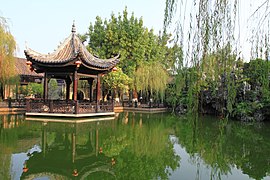
Lingnan garden, or Cantonese garden, is the style ofgardendesign native to the Lingnan region.[13]Geographically, Lingnan has a very different climate from China's heartland (i.e., Zhongyuan), resulting in the development of a different style in garden-designing. The most frequently cited traits of Lingnan gardens are: (1) they tend to surround their plants and flowers with buildings for provided protection, due to the frequent rainstorms in the region; (2) Lingnan gardens usually use regionally native plant species, such as red cotton flowers, lotuses, orchids, and lychee trees; and (3) due to Lingnan being far away from the center of political power (i.e., Zhongyuan), gardens in the region have historically been less stressed by royal standards, resulting in a style that leans more towards the common people, e.g., Lingnan gardens are decorated with a large amount of folk arts, ranging from sculptures to porcelains, and also tend to use smaller and simpler buildings.
Visual arts
[edit]The Nanyue people were already makinga lot of pottery and sculpturesback at the time of their kingdom. After sinicization, the techniques of the people in the region only became even more polished and refined. Nowadays, Cantonese are accomplished craftspeople, known for creating and exporting many fine craft products, including various types of sculptures,embroidery,porcelain,paper cutting,kites,andfurniture,among many others. They have also produced several schools offine arts.In some, visual art styles invented primarily by the Cantonese include the following:
Canton ivory carving
[edit]
Canton ivory woodcarving (Quảng châu nha điêu;gwong2zau1ngaa4diu1) is another well-known product from Lingnan. With a history of 2000 years, it traditionally usesivoryas a raw material to make sculptures, with the Canton-style renowned for being particularly delicate and detailed without being brittle. The Cantonese people have also successfully produced the legendary craft product –Ivory ball.[citation needed]
After the 1980s, however, international ivory trade has been banned. This resulted in the Cantonese people now trying to find substitute materials – materials that look and feel like but are actually not ivory – in their attempt to pass on this ancient art.[14]
Canton jade carving
[edit]
Canton jade carving (Quảng châu ngọc điêu;gwong2zau1juk6diu1) is the Cantonese style ofjadecarving.[15][16]It has a history of more than two thousand years – with archaeologists unearthing jade carvings from the remains of the kingdom of Nanyue.[17]After sinicization, the people of Lingnan learned jade carving from the Tang Empire's jade wares, and invented the technique of "lau sik" (Chinese:Lưu sắc;Jyutping:Lau4sik1;lit.'retaining the colors') – retaining the colors of the original materials, resulting in jade carvings that are very colourful yet natural. Nowadays, Canton jade carvings are frequently used in Cantonese jewelry and decorations.
Cantonese embroidery
[edit]Cantonese embroidery is the Cantonese style ofembroidery,with considerable popularity in Lingnan and its own subculture.[18]It could trace its root to at least the 9th century, where the Tang Empire had documented that the people in the area were making embroidery. Cantonese embroidery attained its current form around the 15th century and has its own set of techniques. Visually, it is known for being colorful and containing multiple images without feeling chaotic. Due to Guangdong's historical role in trade between the Chinese empire and the outside world, Cantonese embroidery had been sold to many Western European people and became a popular type of item in European aristocrats' collections of oriental crafts.
Teochew woodcarving
[edit]
Teochew woodcarving is a distinctive style of woodcarving that originated from the city ofTeochew,which is geographically a part of Lingnan but inhabited primarily by the Teochew people, who belong to the non-CantoneseMin branch of Han Chinese.Despite this, this style of woodcarving is heavily incorporated into various forms of Cantonese crafts. It began in the 11th century and became popularized in the late 16th century. Many Teochew woodcarving products are plated with gold, commonly seen being decorations for Buddhist temples or ancestral halls.
Lingnan penjing
[edit]Lingnan penjing (Chinese:Lĩnh nam bồn cảnh;Jyutping:ling5 naam5 pun4 ging2) is the style ofpenjingof the people of Lingnan. Despite being recognized only in the early 20th century, it can trace its roots to at least the 15th century. This style is noted for its emphasis on the match between "the natural" and "the artificial" parts of the penjing. For instance, artists of Lingnan penjing tend to spend much time choosing a pot that matches those plants. They also tend to trim their plants in such a way that the new growth from the trimmed parts will shadow the trails of trimming, resulting in the penjing looking very natural.
Lingnan style of calligraphy
[edit]Lingnan style of calligraphy is typically described by Han Chinese critics as "bold" and "romantic". Archaeological evidence suggests that the people of Lingnan had been writing and producing calligraphy works since the collapse of the kingdom of Nanyue. However, due to the hot and humid climate of Lingnan, papers tend to decay very quickly, resulting in few such works having been preserved. It was not until the 15th century, whenChan Bak-sabecame the first renowned Cantonese calligrapher, that the Lingnan region got a recognized style of calligraphy. Since then, Cantonese artists have produced several notable works of calligraphy, such as:
- Picture Poem of Farewell to Yun Sung-wun(Viên sùng hoán đốc liêu tiễn biệt đồ thi) byKwong Lou,a Cantonese calligrapher from the early 16th century; This work was made in his farewell to his good friendYun Sung-wun,who had to leave Lingnan due to an assignment from the then Ming emperor. It is a work of "poem painting" (painting with a poem written on it; with both the picture and the poem having some sort of relation to each other). This work is now stored in Hong Kong.
- Picture of Various Southern Gentlemen Coming to Say Farewell(Nam viên chư tử tống lê mỹ chu bắc thượng thi quyển) byZeung Kiu,a Cantonese young woman from the early 16th century, well-known for being both beautiful and very talented. Despite this, she died of an illness at the young age of 19 and her death was widely mourned as a great loss. This work of poem painting is one of her few works and now on display at theGuangzhou Museum of Art.
In the 21st century, the Cantonese people have begun to study the Lingnan style of calligraphy in greater depth.[19]
Canton porcelain
[edit]
Canton porcelain involves painting various colors on white porcelains and cementing the colors on the porcelain products afterward through the use of low heat (less than 800 degree Celsius, which is low by porcelain standards). This style is renowned for its bright colors and detailed drawings. It originated in the 16th century. At that time, the Cantonese people in Guangzhou imported white porcelains fromJingdezhen(a city well known for making white porcelains), worked on them to produce colorful porcelains, and exported their products to Western Europe. Later, this art spread to the entire Lingnan region. Hong Kong, for instance, started making Canton porcelain starting from the 1930s and exported many of their products to the entire world, though nowadays, few Hongkongese work on this style of porcelain outside hobbyists, due to the fact that the city has shifted its focus to the service and finance industries.[20]
- Gallery

Cantonese furniture
[edit]Cantonese furniture can be dated at least back to the 17th century. This style generally uses the native timbers in the Lingnan region, while borrowing elements from traditional furniture styles of the Tang Empire and the Song Empire and artistic styles imported from Western Europe. It is characterized by (1) its tendency to make each furniture item by working on one larger piece of wood, resulting in Cantonese furniture not showing traces of being assembled; (2) taking elements fromBaroqueandRococostyle, especially in its use of curves; (3) using techniques from other Lingnan crafts, such as Teochew woodcarving; and (4) heavy use of shells and marbles as decorations. Nowadays, Cantonese furniture is being exported to many other Han Chinese communities and to foreign countries.
Lingnan school of painting
[edit]The Lingnan School is a distinctive style ofpaintinginvented primarily by Cantonese artists.[21]It originated in the 19th century, founded byGou Gim-fuand several of his associates. This style combined theink wash paintingshared by all Han Chinese andwatercolor painting,also with the influence fromimpressionism.It emphasizes leaving blank spaces and the use of bright colors, in stark contrast to less colorful ink wash painting. For example, "The Flames of the Eastern Battlefield" used watercolor to paint bright red colors in the background. This, alongside the blank spaces in the painting, gives potential alternative interpretations of the blank spaces, which could look like either smoke or clouds.
Others
[edit]Sekwan wareandCochin wareare types ofpotterywith Cantonese origins. The former is still being produced by Cantonese, while the latter is more associated with Taiwan these days.Xiangyunsha silkhas origins in Cantonese culture as well, in Guangdong province.[22][23]
Performing arts
[edit]

Cantonese people are involved in several types ofoperasandperforming arts,includingTea-picking operaandHan opera,with Cantonese opera being the most prominent one. They also have many types of traditional music. All of these are primarily sung and expressed using the Cantonese language.
Folk songs
[edit]The Cantonese language has a very rich collection of folk songs,[24][25]many of which can be traced back to the ancient Nanyue people before sinicization of the region. These folk songs are widely sung and broadcast in the Lingnan region even to this day. Broadly speaking, they can be divided into several categories:
- "Saltwater songs" (Jyutping: Haam4 seoi2 go1; Traditional Chinese: Hàm thủy ca ), which are popular around thePearl River Delta,likethis one;
- "Rooster-selling rhythms" (Jyutping: Maai6 gai1 diu6; Traditional Chinese: Mại kê điều ), which are traditionally sung in rooster-worshiping rituals and said to be related to the bird-worshiping totems of Baiyue peoples; An example would bethis;
- "Kerria songs" (Jyutping: Gou1 tong4 go1; Traditional Chinese: Cao đường ca ), which are often sung in weddings;
- "North Canton folk songs" (Jyutping: Jyut6 bak1 man4 go1; Traditional Chinese: Việt bắc dân ca ), popular in northern Guangdong;
- "Cantonese rhymes" (Jyutping: Jyut6 diu1; Traditional Chinese: Việt điều ), which consist of various subtypes based on pitches and rhythms and include thenam yumtradition. An example of Cantonese rhythms isthis.
Cantonese opera
[edit]Cantonese opera is the style of opera associated with the Cantonese language. Listed as anintangible cultural heritageof the world,[26]it originated in the late 13th century and is a stage art that combines acrobatics, singing, martial arts, and acting.
Cantonese opera also uses a different set of musical instruments. Some of these are used also in other oriental opera styles, such asGuzheng.Due to influence from Western opera, Cantonese opera had also started adopting European instruments starting from the 19th century, such asviolin.Cantonese opera is also noted for its use of makeup and headdresses on the actors' parts. Makeups in Cantonese opera are primarily white, and could vary in colors depending on the personalities of the characters, e.g., totally white makeups are often used to represent a villain. Headdresses are also used to represent the characters.
-
A female Cantonese opera singer
-
Headdresses used in Cantonese opera
-
Bangzi, a musical instrument used in Cantonese opera
Gonggu
[edit]Gonggu (Giảng cổ;gong2gu2,literally "to talk about the past" ) is a popular folk art in Lingnan. It involves artists telling stories fromChinese classicsorCantonese folkloreusing the Cantonese language – while borrowing techniques from Cantonese opera in order to be very rhythmic at that.[27]This art form originated in the 16th century, when Cantonese imported it fromJiangsuand several Cantonese artists learnt from the then famousWuyuestorytellers. Since that time, Cantonese Gonggu has seen steady development, with storytellers performing in their own stalls or Cantonese teahouses. Starting from the 20th century, the area around Guangzhou has even started erecting "storytelling stages" (Thuyết thư đài;Jyutping: syut3syu1toi4,lit.stages where one talks about books) in certain parks and inviting artists to do Gonggu on radio shows.
Partly as a result of this, Cantonese people have accumulated a considerable amount of folktales.[28]
Guangdong music
[edit]Guangdong music is a style of traditional Chinese instrumental music from Guangzhou and nearby areas, though nowadays it is found also in much of China.[29]Guangdong music compositions are primarily based on tunes derived from Cantonese opera and Cantonese folk songs, especially before the 1920s. Stylistically, it is said to be marked by being loud, lively, and upbeat. Some pieces have seen influences from Western music (jazzin particular): they use syncopation and triple time, and incorporate instruments such as thesaxophoneandviolin.
Musical instruments
[edit]
The set of musical instruments used in Cantonese opera styles and music has much overlapping with those used by other Han Chinese groups. There are, however, instruments distinctly Cantonese, with thegaohu(gou wu)being the most representative. Aside from this,qinqin(cheon kum)anderxian(yi yun)are other musical instruments associated with Cantonese music.
Pop
[edit]Canto-pop, also called HK-pop, is a genre of Cantonese music made primarily in Hong Kong. It is apopsubgenre, with influences fromjazz,rock and roll,R&B,electronic music,dance music,and others. It is almost invariably sung in Cantonese, boasting an international fanbase across Guangzhou, Guangxi, Southeast Asia, and (to a lesser extent) Korea and Japan.
Cinema
[edit]For a long time, the Hong Kong cinema had been one of the largest movie industries in the world and still has influence to this day. Being produced by Hong Kong, these movies have been primarily expressed using Cantonese, although films from certain periods were in Mandarin due to geopolitical reasons. Their genres may vary, althoughcomedyandmartial arts moviesare particularly prominent. This style of cinema has acult followingin the West.
Literature
[edit]Poetry
[edit]The Cantonese language, with its 1000-year-long history, has a rich heritage of poetry and literature. The people of the Lingnan region have been composing poems since the 7th century.Zeung Gau-ling,one of the most prolific poets of the Tang Empire, was born and raised in what is nowSiugwan,Guangdong. He was said to be very intelligent since he was a child, and later became the empire's minister. 12 of his poems were listed as the 300 best poems from the Tang Empire. Since then, the Lingnan region has produced a steady stream of poets of varying levels of prominence. They were even given a label called Lingnan school of poetry (Lĩnh nam thi phái), renowned for preserving pronunciations from the Middle Chinese language and composing poems with imagery unique to Lingnan.[30]
Like much of East Asia, most of Lingnan's medieval literature was composed inclassical Chinese(grammatically), rather than the people's spoken language. However, poets in the region had started composing poems using grammaticallyvernacularCantonese since the 19th century, with the work of Cantonese poetLiu Yan-toubeing the most prominent.[31]Many of his works require Cantonese characters (characters specifically invented to write Cantonese) to write down.
This particular style of poetry has accumulated a large number of works. Starting from the early 21st century, Cantonese people have started compiling works of past Cantonese poets in a literature called "All Cantonese Poems" (Toàn việt thi;Cyun4jyut6si1), which has spanned 30 volumes and is yet to be finished.[32]
Vernacular Cantonese literature
[edit]Like the rest of East Asia, Lingnan traditionally usedclassical Chinesefor writing, rather than the peoples' spoken languages. Despite the attempt to createvernacularforms of writing in the late 19th century, theGreater Chinaarea still tended to usestandard written Chinese,a writing system based on Mandarin, not Cantonese (i.e., the native language of the Lingnan region), in writing. Even in cosmopolitan Hong Kong, the vast majority of the people'sworks of literaturehave been written in standard written Chinese. However, starting from the 21st century, Hong Kong, as a cultural center in the region, has developed a complete writing system for Cantonese.[33]Some writers in the city now advocate composing literature in written Cantonese.[34]
Food culture
[edit]The Lingnan region has a special geographical environment different from those of other Han Chinese regions. With its subtropical temperature and high humidity, it has a tendency to have good harvests, whether infarmingorfishing.As a result, cuisine in Lingnan could use many different food materials. The book "New Comments on Guangdong" ( quảng đông tân ngữ ), written by Wat Dai-gwan, said: Thiên hạ sở hữu thực hóa, việt đông kỉ tẫn hữu chi, việt đông sở hữu chi thực hóa, thiên hạ vị tất tẫn dã. (Classical Chinese: Every ingredient that the world has, Guangdong has it; Every ingredient that Guangdong has, the rest of the world may not have it). Today, the cuisine of the Lingnan region has fully developed into a distinct school of cuisine on its own.
Cantonese cuisine
[edit]Guangzhou, the cultural capital of the region, has long been a trading hub. This resulted in many imported ingredients being used in Cantonese cuisine. Besides pork, beef, and chicken, Cantonese cuisine uses nearly every edible meat, including offal, chicken feet, duck's tongue, snakes, and snails. However, lamb and goat are rare. There is also heavy use of seafood, due to proximity to the sea. This style of cuisine uses many cooking methods, with steaming and stir-frying being the most popular, largely due to relative convenience.
Traditionally, Cantonese cooks prefer their dishes to have well-balanced flavor and not be greasy. Spices are used in modest amounts, at best, to preserve the flavors of the primary ingredients, which, in turn, are expected to be at the peak of their freshness and quality. Cantonese cooking tends not to use fresh herbs, contrary toSichuan,European,Thai,andVietnamesecuisines, with garlic chives and coriander leaves being the notable exceptions. Lastly, due to the hot and humid weather of Lingnan and the traditional beliefs that soups can "remove hotness" (Thanh nhiệt khí;cing1jit6hei3), Cantonese cuisine tends to make liberal use of soups.
Lou fo tong
[edit]Lou fo tongis a cuisine among common people in Lingnan. It refers to a set of clearbrothmade by simmering meat and other ingredients over low heat for several hours. These ingredients may include meats, vegetables, seafood, fruits, and medicinal herbs. It originated in the late 17th to early 18th century. At that time, Guangdong had difficulty extracting coals, which resulted in Cantonese people having to rely on firewood for fuels. This caused them to avoid using a large fire (which cooking techniques such as stir-frying require) and instead used low heat to simmer their foods – resulting in lou fo tong. Nowadays, lou fo tong has become a fully developed style of soup and became an integral part of Cantonese cuisine.
- Dishes in Cantonese cuisine
-
Fried bread(Du tạc quỷ), shared by most Han Chinese groups, is common in breakfast.
-
Za leung(Tạc lưỡng), another popular breakfast dish, is distinctly Cantonese.
-
Congee with lean pork and century egg (Bì đản sấu nhục chúc) is also a breakfast staple.
-
BBQ pork(Xoa thiêu) is a popular meal, with many variants in Cantonese cuisine.
-
Deep-fried chickenwith sweet and sour sauce.
-
Beef chow fun(Càn sao ngưu hà) is a staple in Cantonese cuisine.
-
White cut chicken(Bạch thiết kê), considered one of the finest dishes in Cantonese cuisine.
-
Roasted pigeons (Thiêu nhũ cáp).
-
Pig Lung and Almond Soup (Hạnh trấp trư phế thang) is a common lou fo tong.
Tea culture
[edit]
Yum chais a subculture within Cantonese food culture. While it can be found in some other Han Chinese groups, it is far more prevalent among Cantonese people, and also overseas Chinese, historically most of whom have been of Cantonese ancestry. It has a specific set of terminologies among Cantonese. For instance, "to invite someone to go yum cha" is basically a way of expressing friendship. Traditionally, Cantonese could go yum cha whether in the morning, afternoon, or evening. Morning tea is typically dominated by the elderly, although many younger people often accompany their grandparents for morning tea as a way of showing respect and affection. Cantoneseteahousesalso have a set of food specifically designed for morning tea. Afternoon tea is similar in most aspects, except it is more common for entire families to go yum cha at this hour. Evening tea tends to attract large gatherings – and the foods ordered at such hours also tend to be more sophisticated.
Regardless of hours, yum cha starts with the diners ordering a specific set of teas they would like to drink. After that, the waiters would bring the teas, which the diners will be drinking while enjoying the foods and engaging in all sorts of social interactions. Even after they have finished the foods, the diners still tend to stay for half an hour or so chatting.
Dim sum
[edit]Dim sum(Jyutping: Dim2sam1;Traditional Chinese: Điểm tâm, literally "to touch the heart" ) is a characteristic of Cantonese cuisine usually, but not only, eaten during yum cha. They are a set of small bite-sized portions of food served in small steam baskets or on small plates. In Cantonese teahouses, carts with dim sum will be moving around the restaurant for the diners to order from without having to leave their seats. In Cantonese traditions, the diners will often order dim sum at will while chatting and enjoying the endless serving of teas.
In major cities in Lingnan, such as Guangzhou and Hong Kong, culinary schools usually offer courses specifically to train the preparation of dim sum.
Leung cha
[edit]
Leung cha(Chinese:Lương trà;Jyutping:leong4caa4,lit.cool tea) is a kind of infusion made from traditional medicinal herbs. Intraditional Chinese medicine,leung cha is used to treatshanghuoand is considered to have a cooling effect on the body.[35][36]Herbal tea was a unique drink in Lingnan. It is said that herbal tea had appeared before the Qing dynasty. Lingnan is located in a subtropical zone in which the climate is characterized by hot and humid summers and mild winters. People living in subtropical environments are more likely to suffer from ailments such as skin diseases and gastroenteritis, which herbal teas such as leung cha are thought to treat. Drinking herbal tea gradually became widespread as a custom in China, as well as the rest ofEast Asia.[37]In major cities such as Guangzhou and Hong Kong, "cool tea shops", which specialize in selling herb teas, are common sights.[38]Due to the efforts of the governments of Guangdong Province, Hong Kong, and Macau, methods to make leung cha have been considered anintangible cultural heritagepractice in China since 2006.[39]
Tong sui
[edit]Tong suiis a characteristic dessert of Cantonese cuisine. It is a set of sweet, warm soups or custards served as dessert at the end of a meal in Cantonese traditions. It is also common for Cantonese people to leave home to get some tong sui with a group of friends or family late in the evening, an activity called "siu yeh".Choices of types of tong sui vary depending on the season: hot black sesame soup, for instance, tends to be favored in winter.
Brewery
[edit]Lingnan is also known for producing some notable liquors,[40]mostly of therice winevariety. The brewery culture of Lingnan can be traced all the way back to the kingdom of Nanyue, who apparently possessed containers of liquors. In the late 11th century,Su Shi,one of the prominent poets and then minister of theSong Empire,got demoted and reassigned to Lingnan. Also well known for his love for cuisine, Sou Sik wrote a book on brewery not long after his reassignment to Lingnan, called "Su Shi's Words on Liquors" (Đông pha tửu kinh), which became Lingnan's first book on brewery.
Rice wine can be consumed directly, or can be used as a cooking ingredient.
Nowadays, rice wines produced in Lingnan are sold across China and other Asian countries, with Yuk Bing Siu (Ngọc băng thiêu,lit."jade, ice, and burn" ), one of the "Ten Great Liquors of Guangdong", being particularly renowned.
Fruits
[edit]"The Four Great Fruits of Lingnan" (Lĩnh nam tứ đại danh quả)[41]are four fruits locally planted in Lingnan and are frequently used in Cantonese cuisine and desserts. They arelychee,banana,pineapple,andpapaya.
Gallery
[edit]-
Cantonese often run seafood restaurants by the sea, using fish tanks such as those pictured to keep the seafood. It is a common sight in Lingnan.
-
Cantonese also likesiu lap(lit."roasted delicacies" ).
-
Century eggsare commonly used in Cantonese cuisine.
-
Bean curd tong sui. (Đậu hủ hoa)
-
Claypot riceis also a delicacy in Cantonese cuisine.
-
Bird's nest soupsare popularly believed to be beneficial for health.
-
Cantonese also havetheir own style of mooncake.
Martial arts
[edit]
Cantonese people also havetheir own schools of kung fu.[43][self-published source?]Originally disorganized, the fighting techniques of Cantonese people were grouped into different schools between the 18th to 19th centuries. At that time, pirates and bandits were rampant in the empire's fringe regions such as Lingnan. This resulted in Cantonese starting to want to protect themselves, and thus the proliferation of martial arts learning. That was when the Cantonese people organized their fighting techniques into schools, forming the martial arts schools seen among Cantonese today.[44]Martial arts folk heroes from that period, such asWong Fei-hung,are now popular topics of Cantonese films.
Overall, Cantonese martial arts are known for its emphasis on striking in various different ways using punches, while maintaining a steady lower body posture. They often shout battle cries (for the purpose of unnerving the opponents), rarely jump, kick, or do any elaborate large movements – a very pragmatic style focused on striking.[45]Kung fu schools invented and primarily practiced by Cantonese people include, but are not limited to:
Guangdong schools
[edit]Philosophy
[edit]
Lingnan also has its own schools ofConfucianism.Since the 12th century, there has been a steady stream of CantoneseNeo-Confucianthinkers, resulting in several schools of thought.
Lingnan scholarly school
[edit]Lingnan scholarly school (Lĩnh nam học phái;ling5naam4hok6paai3) is the most prominent of schools of Neo-Confucian thought in Lingnan. It was started by a group of Cantonese Confucian scholars in the 15th century, led byChan Bak-sa.[46]Chan's writings have now been compiled in a document titled "Chan Bak-sa's Collection" (Trần hiến chương tập).[47]In this series of writings, Chan expressed his opinions of Confucius's thoughts and reinterpreted them through the lens of Mahayana Buddhism and Taoism. His style of thought has a strong theme ofhumanismandindividualism.It also appeared to have been influenced by Western styles of thought in its belief in more rational ways of thinking than older Confucian thought.
Traditional celebrations
[edit]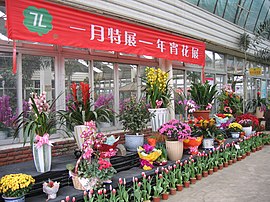

Cantonese people also have a distinct set of traditional celebrations.[citation needed]Many of these celebrations are shared by other Han Chinese groups and even otherEast Asians.TheGhost Festival,for instance, is observed by Japanese and many Southeast Asians as well. However, Cantonese often have their own unique customs. For instance, New Year flower fairs are seen only among Cantonese and certain overseas Chinese communities of Cantonese ancestry. The Lingnan region also has certain celebrations unique to the area.
Cantonese New Year customs
[edit]Han Chinese celebrations
[edit]- Lunar New Year
- First Full Moon Festival
- Buddha's Birthday
- Qingming Festival
- Dragon Boat Festival
- Birthday ofGuanyin
- Ghost Festival
- Mid-Autumn Festival
- Double Ninth Festival
Cantonese-specific celebrations
[edit]- Guangdong Festival of Joy (Quảng đông hoan nhạc tiết;gwong2dung1fun1lok6zit3);
- CantoneseTemple Fair(Quảng phủ miếu hội;gwong2fu2miu2wui6);
- Foshan Autumn (Phật sơn thu sắc;fat2saan1cau1sik6);
- Self-selling Festival (Mại thân tiết;maai6san1zit3);
- Guangzhou Lotus Festival (Dương thành hà hoa tiết;joeng4sing5ho4faa1zit3);
- Kite Festival (Phong tranh tiết;Fung1zang1zit3);
- Flying Colors Parade (Phiêu sắc tuần du;piu1sik1ceon4jau4)
Birthdays of local deities
[edit]- Birthday ofHung Shing(1st and 15th day of any lunar month)
- Birthday ofMazu(23rd day of the 3rd lunar month)
- Birthday ofYun-mou(3rd day of the 3rd lunar month)
- Birthday ofTam Kung(8th day of the 4th month)
- Birthday ofLady Sin(24th day of the 11th lunar month)
Religions
[edit]Traditionally, the Lingnan region is dominated by two religions – Mahayana Buddhism and Taoism.
Mahayana Buddhism
[edit]Compared to worshipping Confucius, Cantonese are traditionally more inclined towards worshipping theBuddhaandBodhisattvasof theMahayana branch of Buddhism,which is shared by most Han Chinese groups. Mahayana Buddhist temples are a common sight in Lingnan, and Buddhist celebrations such as Buddha's Birthday and the Birthday of Guanyin are, traditionally, large events in the region.
TheWan-munsect of Mahayana Buddhism originated in Lingnan and once spread across much of China during theNorthern Songdynasty (10th to 12th century).[48]
Taoism
[edit]All Han Chinese groups traditionally adhere to some forms ofTaoism,and the Cantonese are no exception. The Cantonese have a distinct set of Taoist deities. Cantonese people are, traditionally, worshippers ofWong Tai Sin,a Taoist god of healing. They are also strongly inclined to worship sea deities such asHung ShingandMazu– reflecting the Cantonese tradition of doing trades overseas.
Culture of distance from Confucius
[edit]It has been noted that Cantonese culture is traditionally marked by a "culture of distance fromConfucius"(Viễn nho văn hóa;jyun5jyu4man4faa3,lit."culture of distance from Confucius" ),[49]which may be related to Lingnan historically being a fringe region of the Chinese Empire, and influence from the Tang dynasty (who placed greater emphasis on Taoism and Buddhism than Confucianism): While Confucian philosophy still has its deep influence on Cantonese culture,Confucius Templesare harder to find in Lingnan than Buddhist or Taoist ones.
Others
[edit]Cantonese people have a long tradition of doing commerce with the outside world, including Western Europeans, starting from the 15th century, which resulted inChristianity(mostly theRoman CatholicandProtestantvariants) gaining a foothold in the region.
Commercial tradition
[edit]In the past two thousand years, Lingnan (especially the area around Guangzhou) has spent much of the time being the Chinese Empire's main port, resulting in a strong commercial tradition, formation of renowned Cantonese trade organizations such as theCanton Factories,and even Cantonese developing their own business culture:[50]Cantonese merchants are known for being pragmatic, having a preference for actual profits over fame, and the avoidance of political matters and displays of wealth. Nowadays, Cantonese people still inherit this commercial culture. Major Lingnan cities such asGuangzhou,Foshan,Shenzhen,andHong Kongare regional (if not international) commercial centers. Hong Kong, for instance, scored 748 in 2016'sGlobal Financial Centres Index,ranking fourth in the world and just belowLondonandNew York City.[51]
Cultural symbols
[edit]Red cotton flower
[edit]
Red cotton flower (Chinese:Mộc miên hoa;Jyutping:muk6min4faa1,lit."wood cotton flower" ) is a species of flower common in Lingnan, and is considered to symbolize Cantonese culture. It was said that in 200 BCE,Ziu To,the king of the Nanyue kingdom, once gave a red cotton tree to the Han Empire to express respect – meaning that at that time, the people of Lingnan already used red cotton flowers to represent their homeland. Nowadays, red cotton flower frequently appears in the poems and songs composed by Cantonese people. The folk song Nam Hoi Chiu, for instance, mentioned "Hồng miên" (Traditional Chinese for "red cotton flower" ) to represent Cantonese people and culture. Red cotton flower is currently the official symbol of Guangzhou, the cultural center of Lingnan, and also of Guangdong and Guangxi as a whole.
Macau lotus
[edit]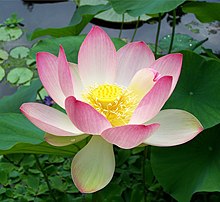
The lotus is the symbol of Macau. It appeared on the flag of Macau after the1999 handover.
Hong Kong orchid
[edit]
The Hong Kong orchid is arguably the symbol of Hong Kong. It was discovered in 1880, and was identified as a new species in 1908. It became Hong Kong's official symbol in 1965 and appeared on the flag of Hong Kong after the1997 handover.Since Hong Kong produced a large number of films, pop songs, and soap operas to promote Cantonese culture, Hong Kong, and by extension the Hong Kong orchid, is widely held to be the symbol of modern Cantonese culture. Nam Hoi Chiu, for instance, also mentioned "Tử kinh"(Traditional Chinese for" purple orchid ") to symbolize the Cantonese people.
TheGolden Bauhinia Squarehas a giant statue of the Hong Kong orchid and is one of the major landmarks of Hong Kong.
Sampan
[edit]
The sampan is a type of flat-bottom boat frequently seen in the shores of theSouth China Sea,used by Cantonese,Hoklo,and many other Southeast Asian ethnic groups. They are usually three to four meters in length and have small shelters on board. This makes it possible for fishermen to live on their own sampans. In the major Cantonese cities of Guangzhou, Hong Kong, and Macau, it is a common sight to see crowds of sampans docked at their harbours.[52]Thus, the image of the sampan-filled harbour is strongly associated with Lingnan. Sampans also regularly show up in films and music videos made by Cantonese.
See also
[edit]
- The Legend of Five Goats,a legend about how Guangzhou, the cultural capital of Cantonese, originated.
- Cantonese folktales
- Eight Sights of Guangzhou
- Cantonese Wikipedia
- CCTV Nanhai Studio
Cantonese customs
[edit]Related cultures
[edit]Others
[edit]- Liangguang( "Leunggwong" in Cantonese), the collective term for Guangdong and Guangxi.
- Lingnan
- Lingnan University (disambiguation)
- Stone dogs in the Leizhou Peninsula
References
[edit]- ^Việt nhân để sắc + di dân —— quảng phủ nguyên lưuArchived2017-08-09 at theWayback Machine(in Chinese)
- ^Wee, J. T., Ha, T. C., Loong, S. L., & Qian, C. N. (2010). Is nasopharyngeal cancer really a "Cantonese cancer"?. Chinese journal of cancer, 29(5), 517–526.
- ^Doan, Thien Thuat; Nguyen, Khanh Ha; Pham, Nhu Quynh; Truong dai hoc tong hop Ha Noi, eds. (2001).A concise Vietnamese grammar: for non-native speakers.Hanoi, Vietnam: The Gioi Publishers.
- ^Quảng đông đường nhân dương tạp toái
- ^"Lĩnh nam văn hóa đích đặc điểm: Tập lịch sử dữ địa lý đích đặc sắc".Archived fromthe originalon 2017-08-30.Retrieved2017-08-30.
- ^Chen, M., & Newman, J. (1984). From Middle Chinese to Modern Cantonese (Part 1). Journal of Chinese Linguistics, 12(1), 148–97.
- ^Chen, M. Y., & Newman, J. (1984). From Middle Chinese to Modern Cantonese (Part 2). Journal of Chinese Linguistics, 334–388.
- ^Chen, M. Y., & Newman, J. (1985). From Middle Chinese to Modern Cantonese (Part 3). Journal of Chinese Linguistics, 122–170.
- ^〈 việt ngữ trung đích bách việt ngữ thành phân vấn đề 〉 lý kính trung trứ khan tái ô 《 học thuật luận đàn ( song nguyệt khan ) 》 1991 niên đệ 5 kỳ đệ 65–72 hiệtISSN1004-4434.0.1991-05-012
- ^Vi thập ma hữu thời hầu phổ thông thoại độc thi từ bất áp vận, nhi dụng việt ngữ độc khước ngận hữu vị đạo?
- ^Thiển đàm lĩnh nam dân cư đích lĩnh nam kiến trúc đặc sắc
- ^Hao, X. I. E. (2010). Possibility of Lingnan Architectural Design [J]. Interior Design, 1, 014.
- ^"Lĩnh nam viên lâm đích doanh tạo thủ pháp dữ nghệ thuật đặc sắc".Archived fromthe originalon 2017-07-30.Retrieved2017-06-22.
- ^Trương dân huy: “Dĩ cốt đại nha” quảng châu nha điêu đích huy hoàng dữ truyện thừa
- ^Trác ngọc nhân dụng tâm điêu khắc tinh trí cô phẩm
- ^Phi di | quảng châu ngọc điêu, nhất chủng nhượng ngọc thạch hoán thải sinh huy kỹ nghệ
- ^Tây hán nam việt vương mộ ngọc khí ( đồ )
- ^The Fading Folk Memory ------ Cantonese Embroidery, Cantonese Enamel & Guangdong Ivory Carving
- ^“Mặc vũ quảng châu” hảo bình như triều lĩnh nam thi thư phong cốt lãng mạn
- ^Chan, P., Yi, C. Y., Yan, K. Y., & Man, L. S. CTL 4514 Project (2014–15) Preservation and promotion of Hong Kong's Canton-decorated porcelain and Evaluation of Hong Kong policies in safeguarding Intangible Cultural Heritage.
- ^Croizier, R. C. (1988). Art and Revolution in Modern China: the Lingnan (Cantonese) school of painting, 1906–1951 (Vol. 29). Univ of California Press.
- ^Pan, Yuanyuan; Xunan, Yang; Chen, Xingjuan; Xu, Meiying; Sun, Guoping (January 2017). "The right mud: Studies in the mud-coating technique of Gambiered Guangdong silk".Applied Clay Science.135:516–520.Bibcode:2017ApCS..135..516P.doi:10.1016/j.clay.2016.09.024.
- ^Lin, ShuHwa (1 January 2008)."Analysis of Two Chinese Canton Silks: Jiāo-chou and Xiang-yun-shā".Textile Society of America Symposium Proceedings.
- ^Hom, M. K. (1992). Songs of Gold Mountain: Cantonese Rhymes from San Francisco Chinatown. Univ of California Press.
- ^Lĩnh nam dân ca tri đa thiếu?
- ^Yung, B. (1989). Cantonese opera: performance as creative process. Cambridge University Press.
- ^"Tế sổ quảng đông tối xuất danh đích 10 đại giảng cổ lão".Archived fromthe originalon 2017-08-16.Retrieved2017-08-16.
- ^Đàm đạt tiên, từ bội quân (1980). Quảng đông dân gian cố sự. Hương cảng thế giới xuất bản xã.
- ^Leisure and Cultural Service Department (Hong Kong) – Guangdong music series
- ^Lĩnh nam thi phái lược luận
- ^"Việt điển văn khố - hi tiếu tập".Archived fromthe originalon 2017-09-26.Retrieved2017-06-22.
- ^《 toàn việt thi 》 sung phân chứng minh quảng đông hữu văn hóa
- ^Snow, D. (2004). Cantonese as written language: The growth of a written Chinese vernacular (Vol. 1). Hong Kong University Press.
- ^"Khải mông dữ cách mệnh - trịnh quán công, hoàng thế trọng đẳng nhân đích việt ngữ tả tác".Archived fromthe originalon 2018-08-21.Retrieved2017-06-22.
- ^Pan, Ming-Hai; Zhu, Si-Rui; Duan, Wen-Jun; Ma, Xiao-Hui; Luo, Xiang; Liu, Bo; Kurihara, Hiroshi; Li, Yi-Fang; Chen, Jia-Xu; He, Rong-Rong (25 March 2020).""Shanghuo" increases disease susceptibility: Modern significance of an old TCM theory ".Journal of Ethnopharmacology.250:112491.doi:10.1016/j.jep.2019.112491.ISSN1872-7573.PMID31863858.S2CID209440516.
- ^Chio, P. H., & Zaroff, C. M. (2014). Traditional Chinese medicinal herbal tea consumption, self-reported somatization, and alexithymia. Asia-Pacific Psychiatry,7(2), 127–134. doi:10.1111/appy.12161
- ^Huang, T. M., & Woo, C. (2013). Cooling China’s Body: Herbal Cooling Tea and. Retrieved February 21, 2019, fromhttp://www.concentric-literature.url.tw/issues/Contested_Modernity_Place_Space_and_Culture/7.pdf
- ^Lim, Lisa (2 February 2017)."How 'heaty' and 'cooling' made it to the Oxford English Dictionary".South China Morning Post.
- ^"The Government of the Macao Special Administrative Region Report on Measures to Protect and Promote the Diversity of Cultural Expressions"(PDF).UNESCO. 2013. p. 6.Retrieved22 October2018.
- ^Quảng đông tối đại tửu văn hóa bác vật quán yết bài phong phú lĩnh nam tửu văn hóa nội hàm
- ^Lĩnh nam tứ đại danh quả —《 lệ chi 》
- ^Võ quán 嵗 nguyệt hồng quyền đích khởi nguyên
- ^Sensei/Renshi Nathan Chlumsky (2015).Inside Kungfu: Chinese Martial Arts Encyclopedia.Lulu.com.ISBN978-13-2911-942-0.[self-published source]
- ^"Võ hiệp tiểu thuyết 《 võ đàn nhị hổ 》 tự tự lí đích quảng đông thập hổ".Archived fromthe originalon 2016-08-17.Retrieved2017-06-25.
- ^Lĩnh nam nam phái võ thuật kỹ thuật đặc chinh đích văn hóa nghiên cứu
- ^Xia, L. I. (2009). Review of Research on Chen Bai-sha [J]. Journal of Guangzhou City Polytechnic, 4, 008.
- ^Trần hiến chương. (1987). Trần hiến chương tập (Vol. 1). Trung hoa thư cục.
- ^Tẩy tông. (1989). 《 vân môn tông 》 giản giới. Lĩnh nam văn sử.
- ^Lưu ích. (1997). Lĩnh nam văn hóa đích đặc điểm cập kỳ hình thành đích địa lý nhân tố. Nhân văn địa lý, 1, 46.
- ^Cheng, Y. H., & Huang, P. Y. (2008). A Review of the Research on the Culture of Cantonese Merchants [J]. Journal of Guangdong University of Business Studies, 3, 013.
- ^"The Global Financial Centres Index 19".Long Finance. March 2016. Archived fromthe originalon 2016-04-08.Retrieved2017-07-10.
- ^Behrendt, S. (2010). Guangzhou. Northwest Review, 48(2), 80–82.

